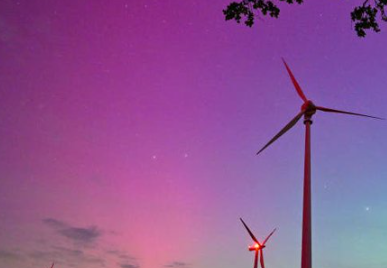The Northern Lights are still on my bucket list. Just haven’t had the time to enjoy such a spectacular view. But there’s good news….
A solar flare that erupted from the Sun on Sunday has launched a burst of solar material expected to pass through Earth’s atmosphere on Tuesday night. This event could trigger a display of the Northern Lights, visible across the northern tier of the United States, including states like Washington, Idaho, Montana, the Dakotas, and extending into the Upper Midwest.
Northern Lights ‘may be seen in UK this week’ as solar flare prompts radio alerthttps://t.co/g4ZSr1hyFZ
— RangerPaulX (@RangerPaulX) July 24, 2024
The NOAA’s Space Weather Prediction Center has issued a level G2 Geomagnetic Storm Watch, on their five-point scale, for Tuesday night. This level indicates moderate activity, which could lead to a visible aurora borealis in areas further south than usual.
Solar flares and coronal mass ejections (CMEs) are significant contributors to geomagnetic storms. These solar phenomena release large quantities of charged particles, primarily electrons, which travel through space and interact with Earth’s magnetic field. When these particles collide with the gases in our atmosphere, they can cause the beautiful light displays known as the aurora borealis or Northern Lights. The color and intensity of these lights depend on the type of gas and the energy level of the particles.
For those interested in witnessing this natural spectacle, the best viewing times are typically between 11 p.m. and 3 a.m. local time. However, the intensity of the display can vary, with periods of increased activity followed by lulls. It’s best to find a location with a clear northern horizon away from city lights, which can interfere with the visibility of the aurora.
This week’s nearly full Moon may also pose a challenge to viewing conditions, as its brightness could wash out the faint auroral lights. However, a strong geomagnetic storm can still produce vivid displays that can be seen despite the moonlight. Additionally, clear skies are essential for optimal viewing, and this week’s weather forecasts suggest favorable conditions in many areas across the Northwest and the Dakotas, with some possible cloud cover in the Upper Great Lakes region.
Interestingly, while this particular solar event is not expected to be as intense as the extreme solar storm of May 10, which brought the aurora as far south as the Gulf of Mexico, it still presents a good opportunity for those in the northern U.S. to witness the Northern Lights. The visibility of the aurora depends largely on the strength of the geomagnetic storm and local weather conditions.
NASA says Northern Lights may be seen in UK as soon as Wednesday this week as ‘moderate storm’ solar storm is coming.
Solar flare prompts National Oceanic & Atmospheric Administration (NOAA) to issue an alert warning about possible geomagnetic disruption. https://t.co/EaWhBaXfUP
— Mark Stephens (@MarksLarks) July 24, 2024
Key Points:
- Solar flare expected to cause Northern Lights in northern U.S.
- NOAA issues G2 Geomagnetic Storm Watch.
- Best viewing between 11 p.m. and 3 a.m. local time.
- Nearly full Moon may affect visibility.
- Clear skies in many areas enhance viewing conditions.
Fallon Jacobson – Reprinted with permission of Whatfinger News

